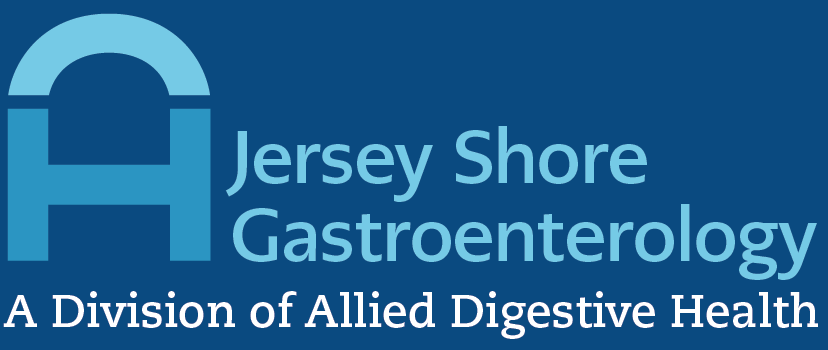Food-Borne Illness Causes, Symptoms, and Prevention

Food-Borne Illness Causes, Symptoms, and Prevention
Food-borne illness, known as food poisoning, is a prevalent health concern affecting millions worldwide yearly. It is caused by consuming contaminated food or beverages that contain harmful bacteria, viruses, parasites, or toxins.
While most cases are relatively mild and resolve on their own within a few days, some can lead to severe complications and even death. Understanding the causes, symptoms, and prevention of food-borne illnesses is crucial for maintaining good health and reducing the risk of getting sick.
What Classifies as a Food-Borne Illness?
Food-borne illnesses are any illnesses resulting from consuming contaminated food or beverages. They can occur when food becomes contaminated during production, processing, or preparation.
Standard classifications include bacterial infections caused by microorganisms like Salmonella and E. coli, viral infections such as norovirus and hepatitis A, parasitic infections like Giardia and Trichinella, and toxin-related illnesses stemming from naturally occurring or bacterial toxins.
Food-borne illnesses can have symptoms ranging from mild gastrointestinal discomfort to severe ones, such as high fever, dehydration, and long-term health complications. Recognizing the variety of pathogens and contaminants that can contribute to these illnesses is essential in implementing effective prevention strategies.
What Are the Risk Factors That Contribute to Foodborne Illness?
Several risk factors can increase the likelihood of food-borne illnesses, influencing food safety practices and individual susceptibility. One major contributor is improper food handling, which includes inadequate cooking, improper refrigeration, and cross-contamination between raw and cooked foods. Additionally, consuming raw or undercooked meats, seafood, and eggs can heighten the risk, as these foods may harbor harmful pathogens.
Specific populations, such as young children, pregnant women, the elderly, and individuals with weakened immune systems, are also at higher risk due to their increased vulnerability to infections. Moreover, seasonal factors can play a role, as warmer months often see a rise in foodborne illness outbreaks linked to outdoor cooking and picnics. These risk factors are vital for implementing preventive measures and ensuring food safety.
What Is Cross-Contamination?
Cross-contamination refers to transferring harmful microorganisms from one food item to another, often occurring through direct contact or shared surfaces and utensils. This process can happen in various settings, including homes, restaurants, and food processing facilities. For example, using the same cutting board for raw meat and vegetables without adequate cleaning can spread bacteria such as Salmonella or E. coli, posing significant health risks.
Understanding the ways cross-contamination occurs is vital to implementing safe food handling practices. Proper measures to avoid cross-contamination, such as using separate utensils for different food types, frequent handwashing, and thorough surface cleaning, are essential to mitigate the risk of cross-contamination and ensure food safety.
Why Are Microorganisms Important?
Microorganisms are crucial in health and the environment, acting as beneficial and harmful entities. Beneficial microorganisms, such as probiotics, support human health by maintaining gut flora balance, aiding digestion, and enhancing immune function. They help prevent the proliferation of harmful bacteria and can contribute to overall wellness. In addition to their health benefits, microorganisms are essential in nutrient cycling within ecosystems, breaking down organic matter and facilitating the availability of nutrients for plants and other organisms.
Conversely, pathogenic microorganisms can lead to food-borne illnesses and other infections, highlighting the dual nature of these tiny organisms. Understanding the roles of microorganisms is essential for developing effective strategies for food safety, disease prevention, and promoting health.
What Conditions Encourage Bacteria to Grow?
Bacteria thrive in specific conditions that promote their growth and multiplication. The “FAT TOM” acronym—Food, Acidity, Time, Temperature, Oxygen, and Moisture—highlights the essential factors that create an ideal environment for bacterial proliferation.
- Food: Bacteria require nutrients to grow; foods high in protein or carbohydrates provide these essential components. Familiar sources include meats, dairy products, and cooked grains.
- Acidity: Most bacteria prefer neutral to slightly acidic environments (pH levels between 4.6 and 7.5). Foods with high acidity, such as pickled vegetables or citrus fruits, inhibit bacterial growth.
- Time: The longer food is left at unsafe temperatures, the more opportunity bacteria have to multiply. It is generally advised that perishable foods should be kept from refrigeration for up to two hours.
- Temperature: Bacteria proliferate best in the “danger zone” between 40°F and 140°F (4°C and 60°C). Keeping food below or above this temperature range can significantly reduce the risk of foodborne illness.
- Oxygen: Some bacteria require oxygen to grow (aerobic), while others thrive in its absence (anaerobic). The type of food and its storage conditions will influence bacterial growth.
- Moisture: Bacteria require water to grow. Foods with high moisture content provide an ideal environment, while dehydrated foods typically discourage bacterial growth.
Understanding these conditions is vital for preventing foodborne illnesses and ensuring food safety in home and commercial kitchens.
What Is the Greatest Threat to Food Safety?
The greatest threat to food safety often stems from a combination of factors that lead to foodborne illnesses. Still, one of the most significant contributors is improper food handling and hygiene practices. This includes inadequate cooking temperatures, poor personal hygiene among food handlers, and insufficient cleaning of surfaces and equipment. Additionally, the globalization of food supply chains has introduced complexities, such as longer transport times and varied storage conditions, that can increase the risk of contamination.
Another critical concern is the rise of antibiotic resistance due to the overuse of antibiotics in animal agriculture, which not only affects food safety but also poses broader public health challenges. Addressing these threats requires a multi-faceted approach involving education, regulation, and stringent food safety measures across all levels of the food supply chain.
What Can I Do to Protect Myself and My Family?
Taking proactive steps to ensure food safety is essential in protecting yourself and your family from foodborne illnesses. Here are several critical practices you can adopt:
- Proper Handwashing: Always wash your hands with soap and warm water before and after handling food, especially after handling raw meat, poultry, or seafood. This simple action dramatically reduces the risk of spreading harmful bacteria.
- Cooking Temperatures: Use a food thermometer to ensure all foods are cooked to safe temperatures. For example, ground meats should reach 160°F (71°C), while poultry should be cooked to at least 165°F (74°C). This ensures that harmful pathogens are eliminated.
- Safe Food Storage: Refrigerate perishable foods promptly and store them below 40°F (4°C) at safe temperatures. Pay attention to expiration dates and use a first-in, first-out system to avoid spoilage.
- Avoid Cross-Contamination: Use separate cutting boards and utensils for raw meats and ready-to-eat foods. Clean surfaces and utensils thoroughly after use to prevent the transfer of harmful microorganisms.
- Educate Your Family: Teach your family about food safety practices, including proper food handling, cooking, and storage techniques. Raising awareness is crucial in maintaining a safe kitchen environment.
Implementing these strategies can significantly reduce the risk of foodborne illnesses and contribute to your household’s overall health and safety.
When to Talk to Your Doctor
Recognizing when to seek medical advice regarding foodborne illnesses is crucial for ensuring timely treatment and preventing severe health issues. Suppose you or a family member experiences symptoms such as persistent nausea, vomiting, diarrhea, or abdominal pain that lasts more than a couple of days. In that case, it is advisable to consult a healthcare professional.
Additionally, immediate medical attention should be sought if symptoms are accompanied by a high fever (above 101°F or 38.3°C), blood in stools, or signs of dehydration. It is imperative to be vigilant about symptoms for individuals with weakened immune systems, elderly patients, pregnant women, or young children, as they may be at higher risk for severe complications. Early intervention can often lead to better outcomes and may help identify the source of the illness, which is essential for preventing further cases within the community.
For more information on food-borne Illnesses, consult the Allied Digestive Health experts.
Footer
Quick Links
Egg Harbor Township Office
609-645-18802500 English Creek Avenue
Building 900 - Suite 903
Egg Harbor Township, NJ 08234
Hammonton Office
609-926-3330219 North White Horse Pike
Suite 104
Hammonton, NJ 08037
Manahawkin Office
609-926-3330517 Route 72 West
Manahawkin, NJ 08050
Cape May Court House Office
609-465-0060425 Route 9 North
Cape May Court House, NJ 08210
Somers Point Office
609-926-3330408 Bethel Road, Suite E
Somers Point, NJ 08244
Vineland Office
856-839-21281133 E. Chestnut Avenue
Building 2, Suite A
Vineland, NJ 08360
© All Rights Reserved


